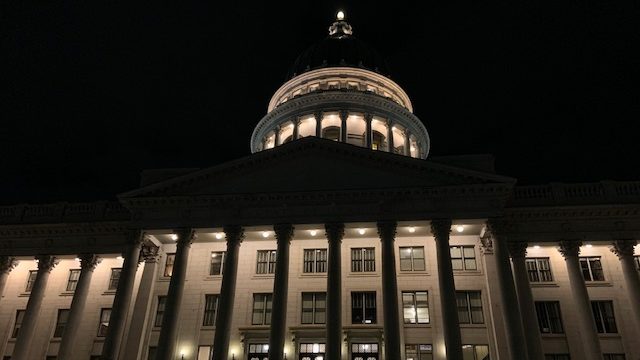UTAH STATE CAPITOL — After receiving a lot of backlash from the local press, a Senate resolution that would limit media access during official Senate business is going through a legislative committee.
Under current Senate rules, a reporter is allowed to approach a legislator on the Senate floor after official business and speaking time have ended. Although this legislator still has the right to refuse an interview. However, Senate Resolution 0001 would require journalists to obtain permission to be on the Senate floor before they can ask questions.
Rejection on media access
Representatives of many local media came to the Senate Business and Labor Committee meeting to denounce the resolution. And the discussion turned into an argument from time to time. For example, the bill’s sponsor, Senator Michael McKell, and KUTV’s news director, Mike Friedrich, spoke to each other as they debated it. Friedrich says the current accreditation process should be sufficient to determine who is a journalist and who is not.
Friedrich said, “There may be a verification process done before the session starts to make sure. So wouldn’t that solve 98% of the problem?
McKell replied, “Good. You are absolutely right and we all face these rules as two percent of the problem.
The resolution would also ban journalists from standing behind the dais without permission from the committee chair. KSL Newsradio news director Becky Bruce said it would unnecessarily create more work for journalists and lawmakers, calling it “bureaucracy that doesn’t need to be there”. She also said it would create a slippery slope that could cause problems in the future.
Bruce said, “You can grant permission to the camera behind you today, but the next committee may not.”
“Just Not True”
Committee chairman Sen. Curtis Bramble said there were only two occasions when the media disrupted the legislature by constantly going back and forth as they worked. But, when it happened, it caused problems. Senator Karen Mayne said she had negative experiences with reporters who approached her after meetings and speaking time.
She said: “Some [were] very uncomfortable, some where they jumped over my intern and some where there was, perhaps, intimidation.
Senator McKell pushed back against claims that preventing a photographer from standing behind the dais prevents reporters from gathering information to release to the public. He said reporters are always encouraged to contact senators individually. And they can ask lawmakers to appear at daily media availability appearances.
“One thing I’ve heard is that we’re going to limit public access in some way. It’s just not true,” he said.
Other senators, like Scott Sandall, agreed, saying lawmakers actually increased access to lawmakers by streaming meetings online. And using tools like Zoom to allow people to participate from afar. In the end, the resolution passed 7-1, with Senator Gene Davis being the only “no” vote. He said the media acts as the eyes and ears of people who cannot attend legislative meetings alone.
Davis said: “It’s the person who’s not here who has access to us. It is not the individual who is here trying to confront us.
Could it be changed before going upstairs?
The resolution that was passed by the committee is not the original version, and it may not be the last. McKell once offered an alternative version that removed the requirement for reporters to follow a dress code before they could be granted permission to be in the Senate.
Even the people who supported the resolution say there needs to be more discussion about how the media can have better access to lawmakers. And Senator McKell said there may be further changes to the text.
“Everything can be changed at any time,” McKell told KSL Newsradio after the meeting. “I think we should always have good political discussions.”
Read more:

